My youngest male troglodyte in Sterkfontein caves
(Cradle of Humankind, world heritage site, Gauteng, South Africa.)
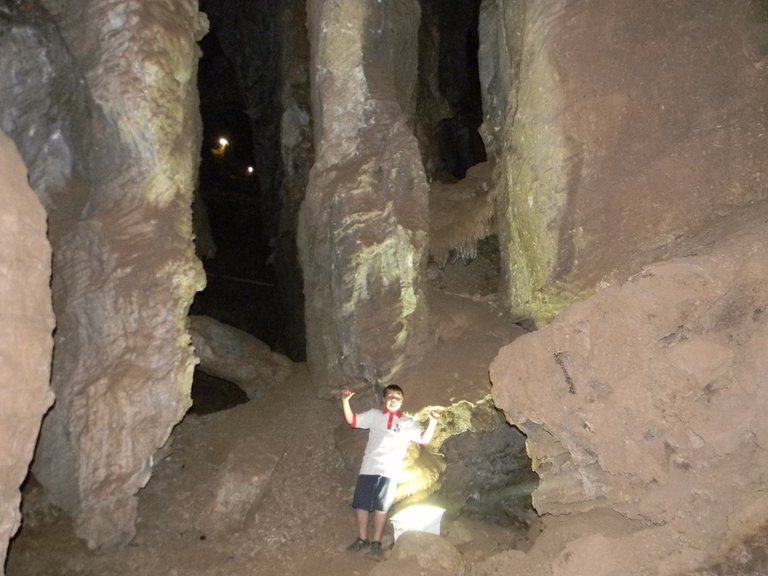
Entering and traveling through the caves
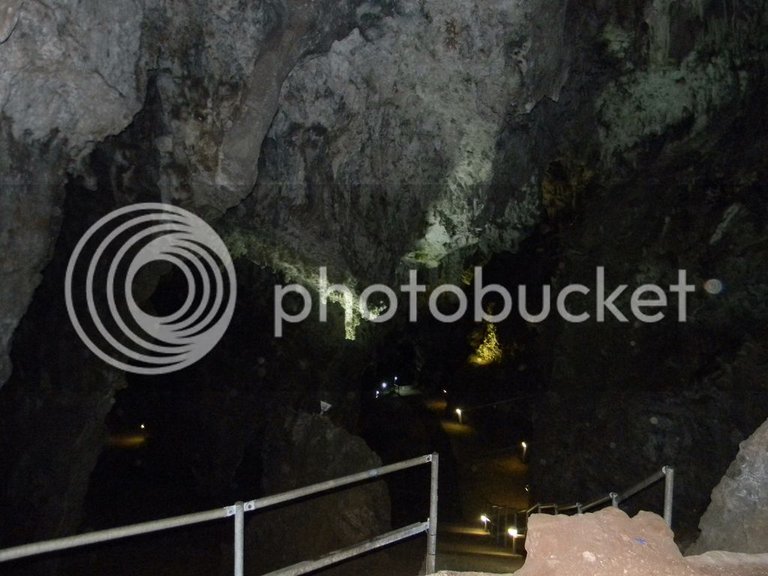
The caves were discovered by calcite miners. Many of the cave formations were mined, damaged and completely destroyed.
So it’s not a very picturesque cave… lots of damaged formations and many have a permanent outer coating of dust from the dynamite blasting.
The limestone and calcite was mined for use in explosives and paint. Much of it went to the early gold mines in South Africa.
It was the mining activities that exposed the fossils and made Sterfontein caves famous even though it is not known how many thousands of fossils the mining activities destroyed.
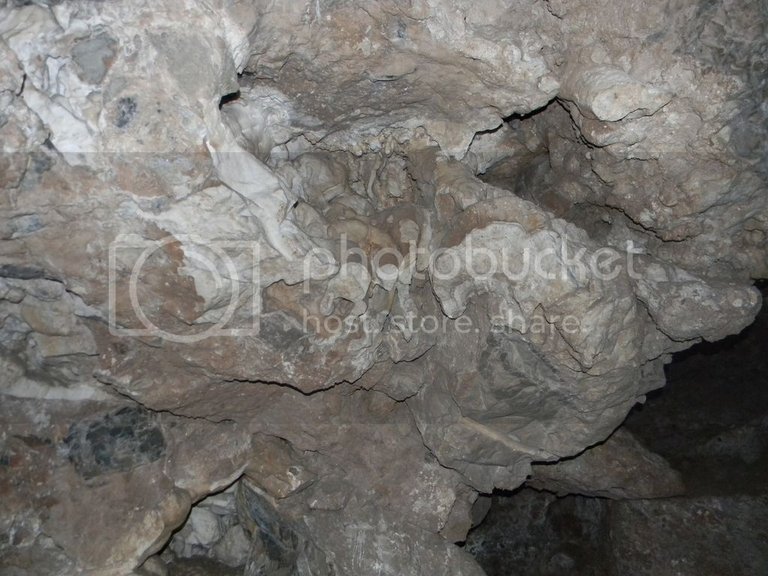
Fossils are found embedded in Breccia.
In this case a mixture of rocks soil, bone etc. that fell down crevices in the roof of the cave. This rubble is then cemented by dripping cave water into a solid rock which fossilizes the bits of bone.
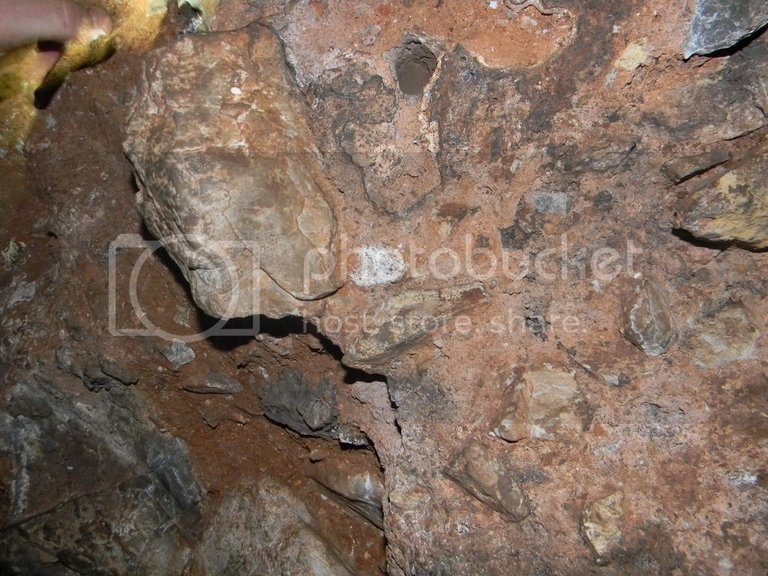
An active excavation site

Helictites, very delicate cave formations formed by capillary actions.
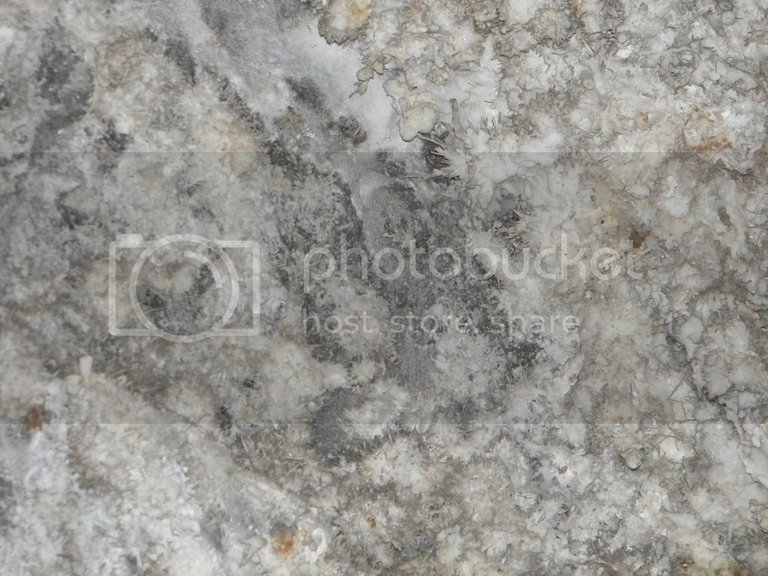
Some undamaged flow-stones coating the side walls of a cavern
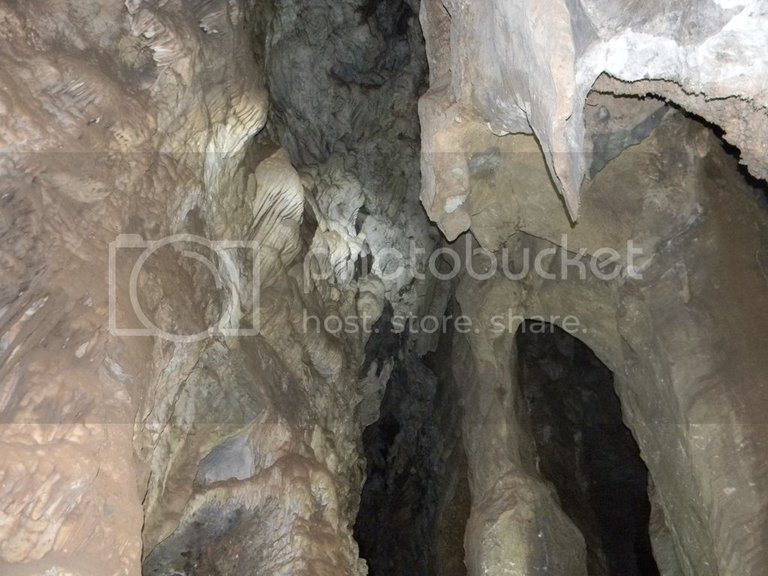
Side passages heading of to areas not accessible to the public
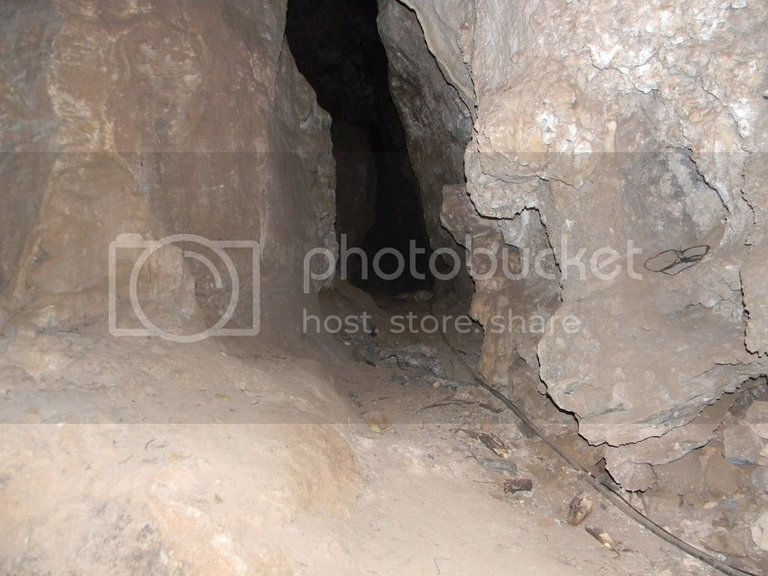
Flow-stone curtains unfortunately covered in grey dust and grit from the miners blasting almost a century ago
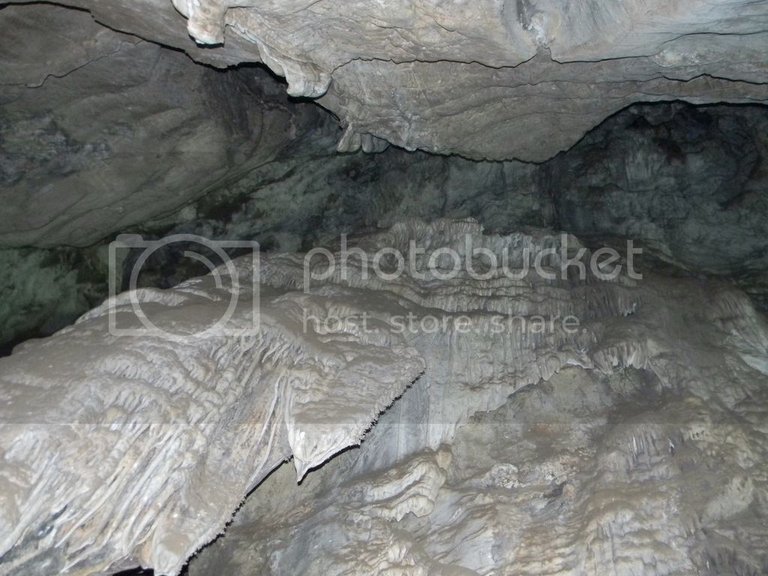
Some interesting undamaged speleothems
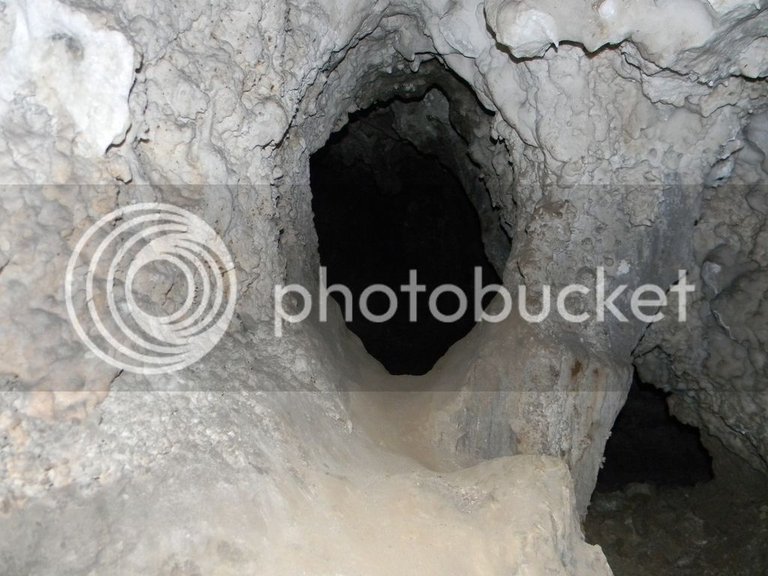
More another day from the surface workings... I need to dig up those pictures.
Thanks for sharing gavvet. Thought about visiting it a few times as it is only a 2 hours drive from me. For those that don't now the story of the Cradle of Humankind here's a quick intro.

The Cradle of Humankind is a paleoanthropological site about 50 kilometres northwest of Johannesburg, South Africa in the Gauteng province. Declared a World Heritage Site by UNESCO in 1999, the site currently occupies 47,000 hectares (180 sq mi) and it contains a complex of limestone caves.
The Sterkfontein Caves contain the discovery of a 2.3-million-year-old fossil Australopithecus africanus (nicknamed “Mrs. Ples”), found in 1947 by Robert Broom and John T. Robinson. The find helped corroborate the 1924 discovery of the juvenile Australopithecus africanus skull, “Taung Child”, by Raymond Dart, at Taung in the North West Province of South Africa, where excavations still continue.
I look at these photos and experience mild fear. What is wrong with me? xD
claustrophobia perhaps?
I hope no.
I just was not in the caves.
Probably afraid of getting lost.
Thanks for the pictures. :)
Great posting! I LOVE this type of activity and have delved into it myself a bit here and there, especially as I was rock climbing around Vancouver Island, British Columbia, Canada. Thanks for the posting, namaste :)
I'd upvote you for the title alone
I hoped some would get it.
I must admit I see myself as someone who understand English very well (not a native speaker), but I had to Google translate it:

And what is the extent of these caves ? I was very interested in childhood and loved crawling through caves
They run for kilometers and join up with other cave systems in the area. The lower reaches extend into an underground lake and divers have never explored them all.
They will remain unexplored because a diver was lost in the underground lake system. He did surface with insufficient air to get out of the cavern he was in... his body was found 3 weeks later and he had starved to death unable to dive to return.
Beautiful caves. I was once in a much smaller cave system when the lights went out. Only for about 2 minutes, but the intensity of the darkness is hard to describe.
A darkness you can feel....
Really interesting photos! Seems like quite an adventure to go explore those caves. Made me think about Skyrim for some reason...
Nice cave :D
wow amazing nice post you
[Mistake - Edited]
very interesting, but if more photos and information
Nice place...